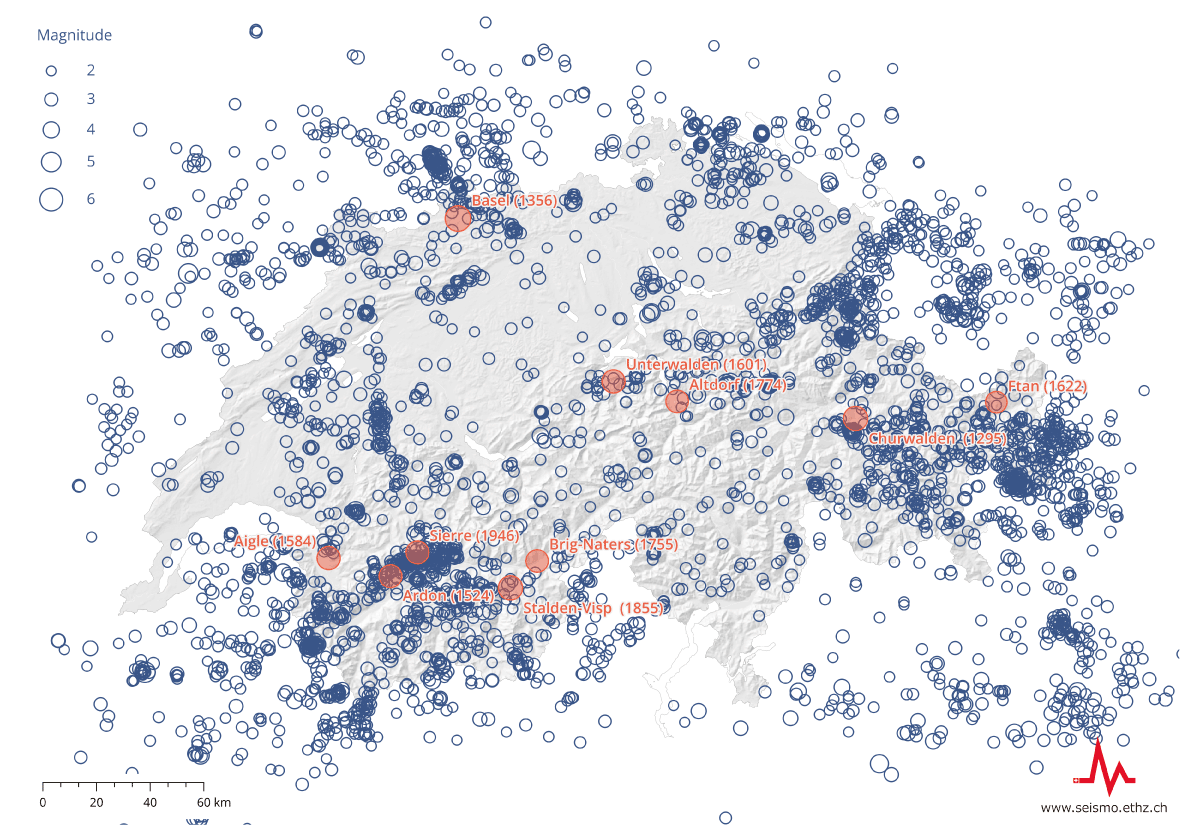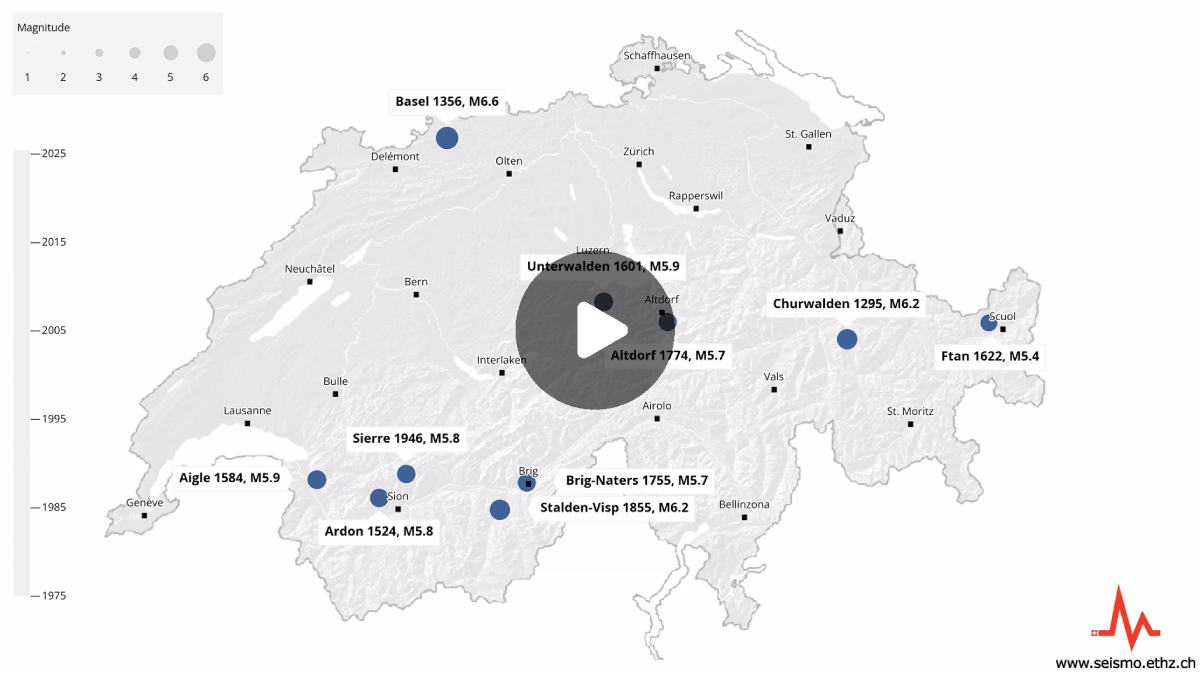The strongest earthquake in recorded history occurring north of the Alps occurred in Basel in 1356. The following map shows the ten strongest earthquakes that occurred in Switzerland during the last millennium (strong aftershocks are not displayed) as well as all instrumental recorded earthquakes between 1975 and 2024 with a minimum magnitude of 2:

| Date | Location | Magnitude | Intensity |
| 18.10.1356 | Basel (BS) with strong aftershocks |
6.6 | IX |
| 03.09.1295 | Churwalden (GR) | 6.2 | VIII |
| 25.07.1855 | Stalden-Visp (VS) with strong aftershocks |
6.2 | VIII |
| 11.03.1584 | Aigle (VD) with strong aftershocks |
5.9 | VIII |
| 18.09.1601 | Unterwalden (NW) | 5.9 | VIII |
| ??.04.1524 | Ardon (VS) | 5.8 | VII |
| 25.01.1946 | Sierre (VS) with strong aftershocks |
5.8 | VIII |
| 09.12.1755 | Brig-Naters (VS) | 5.7 | VIII |
| 10.09.1774 | Altdorf (UR) | 5.7 | VII |
| 03.08.1622 | Ftan (GR) | 5.4 | VII |
Seismographs and later seismometers have been recording earthquake data since the end of the 19th century. The collected data enable quakes to be pinpointed and assigned a magnitude. However, only data obtained since the installation of a network of modern measuring devices in Switzerland in the 1970s can be deemed reliable.
Researchers interested in the consequences of older events have to rely on historical accounts from previous centuries. These accounts are evaluated and attributed a value along the European macroseismic scale (EMS-98) with a view to estimating earthquake parameters (location, strength, depth) with the help of statistical procedures. All reports that are examined are subjected to a critical historical analysis so as to arrive at the best possible interpretation or reconstruction of events. This method has successfully traced back some earthquakes to the first millennium, since some chronicles from the early Middle Ages reported individual events of this kind.
'Natural archives' provide valuable information for periods stretching even further back in time. Examples of such natural archives are lake-bed sediments that document soil slippage resulting from earthquakes, broken stalactites and stalagmites in caves and archaeological findings. However, these paleo-seismological methods are not entirely reliable.
The ECOS-02 catalogue and its update, ECOS-09, is the first historically qualified catalogue of earthquakes in Switzerland available online. It covers the period extending from 250 A.D. to the end of 2008 in varying detail, due to the limited data surviving.
